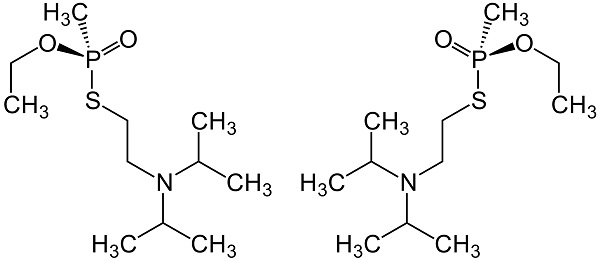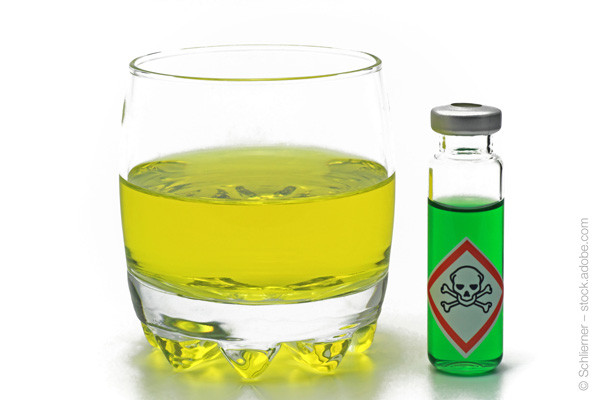Chiral GC analysis of a chemical warfare agent
The most deadly chemical substances include G-class nerve agents (such as “Soman”, “Sarin”, “Tabun”) and V-class (“VX”) nerve agents, which were developed in the 1940s and 1950s. Like the “Novichok” agents, which are currently frequently mentioned in the media and were developed some 20 years later, these are organophosphorous compounds that block acetylcholinesterase in the body. An enzyme that breaks down the neurotransmitter acetylcholine into choline and acetic acid. If this is not done, the nerves are put into a state of hyperstimulation, which eventually leads to the inhibition of intercellular signal transmission. Vision problems, muscle cramps, respiratory paralysis and finally death occurs. The exact molecular structure of the “Novichok” agents is not known, but they are thought to be structurally similar to G- and V-class compounds.
In experiments with mice, LD50 values were determined and the S-enantiomer was found to be more than 10 times more toxic.(1)
MACHEREY-NAGEL’s beta-cyclodextrine based chiral GC column HYDRODEX ß-TBDAc can successfully separate the two VX (O-ethyl S-[2(diisopropylamino)ethyl] methylphosphonothionate) into its two enantiomers.(2)
Access to chiral GC application: VX enantiomers in hemolysed swine blood samples
Molecular structures of R (+)- VX and S(-)-VX

References:
(1) H.P. Benschop, L.P.A. De Jong: Nerve agebt stereoisomers: analysis, isolation and toxicology. In: Acc. Chem. Res. 21, no.10, 1988, p.368-374, doi:10.1021/ar00154a003.
(2) Reiter, G. et al., J. Chromatogr. B 873 (2008), 86 – 94.


